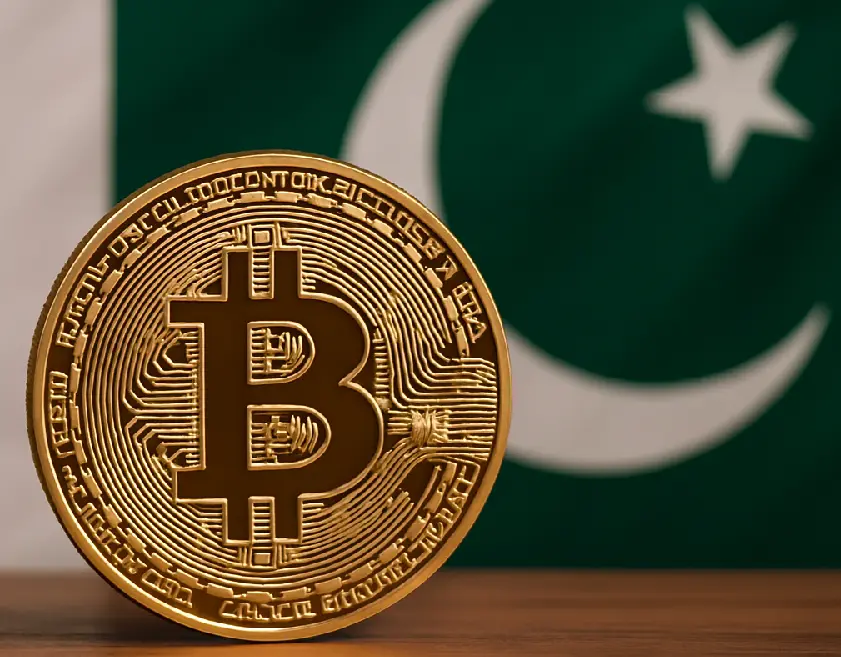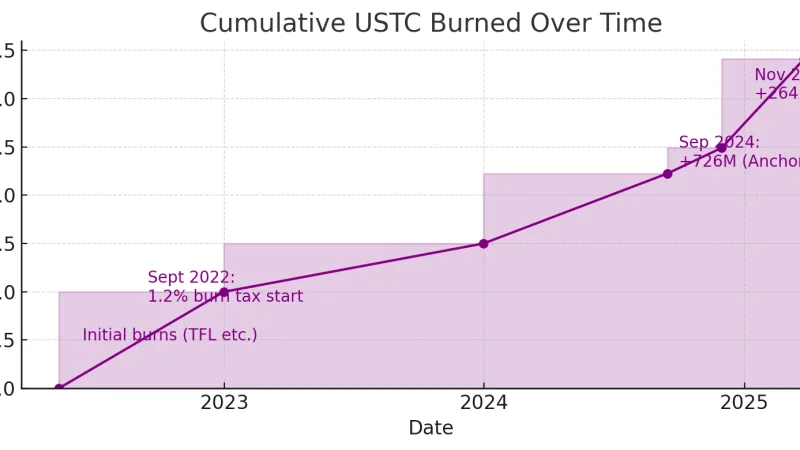Crypto in Pakistan: Between Promise, Politics, and Pragmatism

Pakistan stands at a critical crossroads. With a crashing rupee, a booming freelance economy, and over 100 million unbanked adults, crypto isn’t a trend here — it’s a financial lifeline. Millions of Pakistanis have already turned to digital assets not for speculation, but for survival and stability. The recent launch of the Pakistan Crypto Council signals intent, but intent without action is inertia. This article explores what’s broken, what’s missing, what’s already working — and lays out a bold, strategic roadmap to position Pakistan as a regional leader in Web3. The time for caution is over. The time to build is now.
Fundamental Pitfalls of Pakistan’s Crypto Ecosystem
Legal Ambiguity: The Elephant in the Room
Despite Pakistan’s increasing crypto engagement, its legal framework remains in limbo. The State Bank of Pakistan’s (SBP) 2018 circular still technically prohibits banks from processing cryptocurrency transactions, creating a de facto ban without formal legislation. There’s no dedicated Crypto Act, no role clearly assigned to the Securities and Exchange Commission of Pakistan (SECP), and no definitions for different types of digital assets—be they utility tokens, security tokens, or even central bank digital currencies (CBDCs).
This legal vacuum has opened the door to exploitation. Without enforceable consumer protections or licensed platforms, Pakistani users remain vulnerable to scams like pump-and-dump schemes and rug pulls that thrive in unregulated environments.
No On-Ramps or Local Custody
In the absence of formal gateways or licensed exchanges, most Pakistani crypto users have had to resort to alternative — and often risky — methods to participate in the digital economy. Peer-to-peer (P2P) transfers remain the most popular option, enabling users to send and receive crypto without relying on centralized platforms. Many also engage in hawala-style conversions, where local agents swap cash for crypto directly to digital wallets. Others go further underground, using VPNs to access banned platforms and even manipulating bank accounts to bypass existing restrictions. This patchwork approach reflects both the demand for crypto and the lack of regulated access, creating a shadow ecosystem outside the government’s oversight.
Absence of Taxation Framework
Pakistan currently lacks any formal mechanism for declaring crypto assets or gains. Cryptocurrencies are not recognized as assets like real estate or stocks, nor are they treated as currency or commodities. This legal blind spot allows vast amounts of undeclared capital to flow offshore, contributing to tax evasion and the rise of a parallel shadow economy.
The Federal Board of Revenue (FBR) could introduce a model inspired by India’s 1% TDS on crypto transactions and the UAE’s voluntary disclosure amnesty. This would allow Pakistanis to transparently declare holdings and support national revenue without fear of prosecution — a win-win for the state and crypto adopters alike.
Brain Drain and Informalization
A growing number of Pakistani crypto developers, blockchain engineers, and fintech entrepreneurs are relocating to crypto-friendly hubs like Dubai, Singapore, and Estonia. These jurisdictions not only offer seamless company incorporation for Web3 startups but also provide access to banking services and legal frameworks that support tokenized fundraising and innovation.
Pakistan’s knee-jerk reaction of over-regulation or outright bans is backfiring. Instead of taxing crypto into the shadows, the country should harness its talent pool to reverse brain drain, encourage startup incubation, and create homegrown fintech success stories.
Related Story:
Bitcoin vs. Crypto: A Veteran’s Guide to Avoiding Scams and Embracing the Real Innovation
What’s Missing: Structural and Strategic Gaps
A National Crypto Vision
In contrast to countries with mature crypto ecosystems like the UAE, Japan, and Singapore — all of which have dedicated crypto authorities, regulatory sandboxes, and clear token issuance laws — Pakistan lags severely behind. There isn’t even a foundational position paper from the Ministry of Finance or the State Bank of Pakistan (SBP).
This institutional silence sends a damaging signal: no clarity, no confidence. Without a transparent framework or roadmap, foreign investors steer clear, and local innovation is stifled before it starts.
Research and Technical Capability
Pakistan currently has no public institution researching core blockchain domains like Layer 1 and Layer 2 protocols, smart contract security, tokenomics, or national stablecoin design. This lack of academic and technical exploration is a major blind spot in a sector that demands deep understanding and innovation.
The Pakistan Crypto Council (PCC) should immediately establish a Blockchain Research Lab at top universities like NUST or LUMS, involving collaboration between academia, state regulators, and industry leaders. India has already launched such initiatives with IITs — Pakistan must catch up or get left behind.
Financial Inclusion via Stablecoins
In a country plagued by persistent rupee devaluation, Pakistanis increasingly turn to USDT (Tether) to protect their savings. Yet, Pakistan still lacks a rupee-backed stablecoin, leaving a crucial financial innovation unexplored. Despite global momentum, the State Bank of Pakistan (SBP) has neither piloted a CBDC nor launched any stablecoin sandbox initiative.
The Philippines’ central bank (BSP) collaborates with platforms like Coins.ph to roll out peso-backed stablecoins, usable for daily expenses like public transport. Pakistan could replicate this model to promote financial inclusion and payment innovation.
Law Enforcement and Security
As Pakistan’s crypto space grows unchecked, so do the scams. From Ponzi-style schemes like “Double Shah 2.0” to shady platforms offering 50% monthly returns, the digital financial landscape has become a breeding ground for exploitation. Some scams even masquerade as religious charities or community aid programs, exploiting public trust in the absence of state oversight.
Pakistan urgently needs a Digital Asset Fraud Unit — a joint initiative between NADRA, FIA, and SECP. This task force should specialize in forensic blockchain tracking, public complaint resolution, and scam prevention, modeled on global best practices.
What’s Working: Seeds of Progress
Pakistan’s crypto ecosystem is gradually maturing, evidenced by the recent launch of the Prime Minister’s Committee on Crypto (PCC) — a signal of growing political will to engage with digital assets. On the grassroots level, influencers like Waqar Zaka and Danyaal Ahsan are actively educating youth, while a growing number of freelancers now demand crypto payments for global gigs. Behind the scenes, major banks are quietly experimenting with blockchain R&D, though details remain under wraps. Internationally, Binance has shown interest in engaging with Pakistani authorities, and locally, young entrepreneurs are informally building NFT platforms, DAOs, and metaverse experiences. If nurtured wisely, Pakistan could be on the verge of its “Digital 2005 moment” — echoing the mobile telecom boom that followed PTA’s regulatory intervention — suggesting that structured crypto policy could unleash similar transformative growth.
Strategic Roadmap: What Should Pakistan Do Now?
To unlock the true potential of crypto in Pakistan, a structured policy roadmap is essential — one that balances innovation with oversight.
Short-Term (0–6 months)
Pakistan’s first step should be lifting the State Bank of Pakistan’s 2018 circular, officially categorizing crypto as a “controlled asset” rather than banning it by omission. Clear tax guidance should follow, allowing Pakistanis to voluntarily disclose holdings and gains without fear of prosecution. Simultaneously, national awareness campaigns — broadcast via TV, NADRA service centers, and mobile networks — can demystify crypto for the public.
Mid-Term (6–18 months)
A regulatory sandbox under SECP would enable startups to experiment under supervision, learning while minimizing consumer risk. Local crypto exchanges should be licensed with mandatory KYC (Know Your Customer) and AML (Anti-Money Laundering) protocols. Meanwhile, incentives such as tax holidays or capital gains exemptions for three years can nurture local blockchain innovation and stop the exodus of talent to Dubai and Singapore.
Long-Term (18–36 months)
On the institutional side, blockchain can be integrated into land records, procurement systems, and NADRA databases to enhance transparency and reduce corruption. The central bank should spearhead a rupee-backed stablecoin for digital remittances and micro-payments. Finally, piloting a central bank digital currency (CBDC) will align Pakistan with global monetary modernization trends and reduce dependency on cash.
The Ticking Clock of Crypto Reform
Pakistan isn’t just late to the global crypto revolution — it’s hesitating at the threshold, holding the keys yet unsure which door to unlock. In a world racing toward decentralization, crypto isn’t a luxury for Pakistan; it’s a strategic necessity. It holds the potential to empower freelancers, ensure financial independence, and bring Pakistan onto the global fintech map. The cost of inaction is steep: lost capital, brain drain, and diminished credibility. Yet, with timely, bold reforms, Pakistan has a real opportunity to become South Asia’s Web3 powerhouse — a regional hub like Dubai. The choice is stark: will we regulate innovation now, or chase it after it’s already left?
Source(s):
SBP’s Public Notice REGARDING VIRTUAL CURRENCIES






